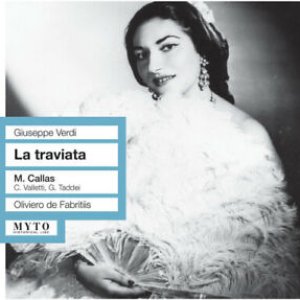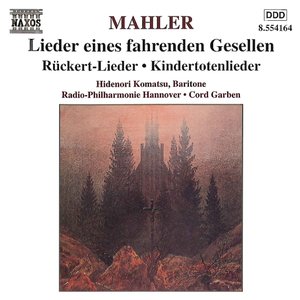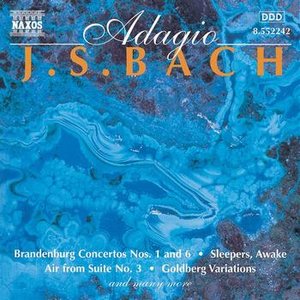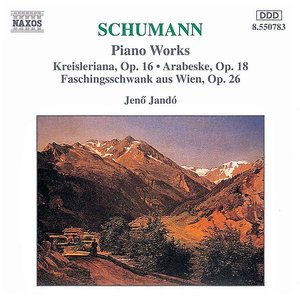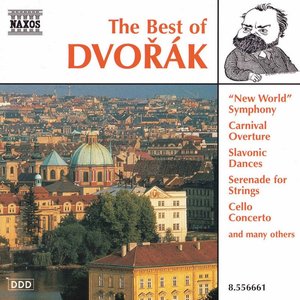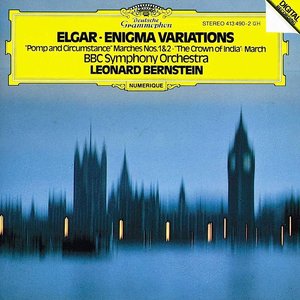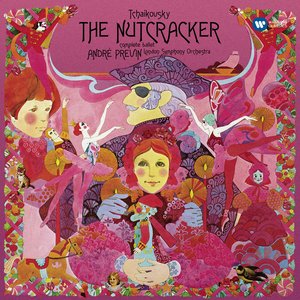Wiki
-
Release Date
1 May 2010
-
Length
53 tracks
Beethoven - All Symphonies
Symphony No. 1 in C major op.21
Symphony No. 2 in D major op. 36
Symphony No. 3 in E flat major 'Erotica' op.55
Symphony No. 4 in B flat major op. 60
Symphony No. 5 in C minor op. 67
Symphony No. 6 in F major 'Pastoral' op. 68
Symphony No. 7 in A major op. 92
Symphony No. 8 in F major op. 93
Symphony No. 9 in D minor op. 125
———————-
Symphony No. 1 in C major op.21
Symphony 1- I. Adagio molto - Allegro con brio
Symphony 1- II. Andante cantibile con moto
Symphony 1- III. Menuetto- Allegro molto e vivace
Symphony 1- IV. Adagio - Allegro molto e vivace
Beethoven's First Symphony was completed at the beginning of 1800 when he was 30.
He had already made several sketches for a symphony but this was the first completed version.
The influence of Mozart's wind music in it led to a critic at the first performance claiming
that the wind instruments were used too much, especially as they were not played with any energy.
However, for this first performance in Vienna, it was placed alongside a Mozart Symphony, an aria
from Haydn's Creation, Beethoven's Septet op.20 and his First Piano Concerto, so it is not surprising
that the musicians perhaps appeared to be lacking in energy by the time it came to the Symphony.
Both Mozart and Haydn's symphonic models are evident in Beethoven's First Symphony but it was
nevertheless innovative for its time and showed Beethoven as a composer with his own developing ideas.
One of the most striking features is the strange opening. A dominant seventh on F leads to three
cadences which 'resolve' to a chord of G major, working through tonal developments until the Allegro con brio in C major.
This immediately indicates Beethoven's intentions for the rest of the symphony and indeed for all
his music - to use keys and tonal development to achieve high drama and intensity in music.
The second movement has a prevailing dotted rhythm, which links the developments, more motific than melodic.
The third movement entitled 'Minuet' is much more like a scherzo than a classical minuet in its speed,
swift key changes and character, another trait of Beethoven.
Like the first movement, the finale opens with a brief slow introduction, where the violins meander
through scale passages which increase in speed to introduce the main subject of the movement - full of energy.
Symphony No. 2 in D major op. 36
Symphony no.2 in D major, op.36- Scherzo (Allegro)
Symphony no.2 in D major, op.36- Adagio molto - Allegro con brio
Symphony no.2 in D major, op.36- Allegro molto
Symphony no.2 in D major, op.36- Larghetto
The first years of the new century were a time of torment and even despair for Beethoven.
In October 1802 he wrote the famous "Heiligenstadt Testament", a lengthy letter to his brothers
which, though never actually sent, expressed most eloquently the trauma of increasing deafness which he had to endure.
In this moving and highly personal document Beethoven contemplates suicide, but rejects it
because his sense of mission prevails:
"Only it, my art, held me back. It seemed to me impossible to quit the world until I had produced all I felt it in me to produce; and so I reprieved this wretched life."
Since the Symphony No 2 is contemporary with this crisis, it makes a particularly interesting
example of the relationship between a composer's life and his art.
If viewed in this way, the symphony confirms Beethoven as a classical rather than a romantic artist, for only in the first movement's slow introduction is a sense of passionate intensity approaching personal grief to be found.
Instead the symphony, taken as a whole, is an exuberant and lively composition of not inconsiderable power: if it proves anything, it proves that creativity can drive out despair.
A review of the premiere, which took place in the Theater an der Wien on 5th April 1803, makes interesting reading: "The First Symphony is better than the later one because it is developed with lightness and is less forced, while in the Second the striving for the new and unexpected is already more apparent.
However, it is obvious that both are not lacking in surprising and brilliant passages of beauty.
The Symphony opens with an extended introduction, at once eloquent and deeply felt, producing a mood of tension and mystery.
These tensions eventually release the movement proper, which abounds in vigorous activity,
and this characteristic pervades all the thematic material.
The long coda is especially dramatic, anticipating that of Beethoven's next symphony, the celebrated "Eroica".
In the Larghetto the sonata principle is in evidence once again, but the mood is now far more leisurely,
and in fact the music's style recalls that of the eighteenth century serenade.
The melodic inspiration is admirable, and it is always treated with subtlety and carefully balanced textures, emphasised by orchestral colouring.
Trumpets and drums are omitted altogether, while special attention is given to the clarinets and bassoons.
The Scherzo is lively, its drama stemming from sudden changes of rhythm, texture and dynamic,
with highly individual scoring based upon the contrasts between the different orchestral sections.
The central trio section has a more leisurely character, though in truth it is given relatively little
chance to impose its personality.
The finale abounds in liveliness and wit, its principal theme immediately setting the agenda,
until the second subject brings a more lyrical outlook in the form a quiet dialogue between woodwind and strings.
But the music's onward momentum remains paramount, and in the closing stages there is a genuinely
powerful exuberance, which in retrospect can be seen as a significant landmark in the evolution of the classical style.
Symphony No. 3 in E flat major "Erotica" op.55
Symphony No.3 In E Flat Major, Op.55- Scherzo. Allegro vivace
Prometheus Overture, Op.43
Symphony No.3 In E Flat Major, Op.55- Allegro con brio
Symphony No.3 In E Flat Major, Op.55- Finale. Allegro molto - Poco andante - Presto
Symphony No.3 In E Flat Major, Op.55- Marcia funebre. Adagio assai
Although in his Second Symphony Beethoven had begun to move beyond the traditional concept of the classical symphony, his Eroica remains a staggering achievement, taking the genre into hitherto uncharted regions.
Here, in 1803, we have a symphony which in performance lasts nearly a full hour, a symphony whose first movement alone is as long as many symphonies in their entirety.
Yet nothing about the Eroica is inflated or grandiose; on the contrary, the work is a model of economy and precision.
Beethoven enlarged his previous symphonic orchestration only by the addition of an extra horn;
it is therefore the size and scale of the symphonic concept which are expanded, but in purely musical terms.
The logical and emotional power of the music carries the listener along, and to achieve his aim Beethoven employs numerous characteristic devices.
There are often off-beat accents to reinforce dissonant harmonies and to produce, in the first movement especially, the most tremendous symphonic tension; and it is from this great sense of emotional strength that the sheer scale of the composition derives.
…He had realised that only through creating his music could he sustain the will to live…
Such a composition could have been created only by a truly great figure, and the struggle confronting Beethoven with his increasing deafness had already been made apparent in the moving "Heiligenstadt Testament", which he had written in 1802.
He had realized that only through creating his music could he sustain the will to live.
And it is the strength of his will that we encounter in the first two movements of this remarkable symphony.
It is hardly surprising that contemporary opinion did not much care for the music when it was first heard,
though thanks to the committed advocacy of a few enlightened patrons, such as Prince Lobkovitz, recognition came eventually.
Originally the title page bore the name "Napoleon Bonaparte" as dedication, but Beethoven literally
scratched it out when Napoleon had himself proclaimed Emperor, saying, "Is he then, too, nothing more
than an ordinary human being?"
The first movement is constructed on a huge scale, with a coda long enough to count as a second development section.
Two abrupt fortissimo chords provide the shortest of introductions, and the mobile principal theme is heard immediately.
Its treatment is wide ranging indeed, yet the flow of inspiration is taut and continuous.
The linking of the development to the recapitulation is a moment worthy of special comment: the violins are still preparing the way for when the horn enters with the first subject theme, with the result that two different keys are heard simultaneously.
So daring was Beethoven's ploy that many of his contemporaries were convinced that rather than a dramatic gesture, this was simply a mistake.
…the central part is more mobile and brings a balance and contrast…
The succeeding slow movement is equally demanding in its concentration.
The outer sections are intense and heavily funereal in mood, but the central part is more mobile and
brings a balance and contrast.
Throughout this movement the instrumental colors emphasize the solemnity, for the vast and slow moving principal theme is wholly serious, a characteristic confirmed by its treatment in development.
The Scherzo occupies a different world from that of the eighteenth century minuet.
The tempo is an unequivocal Allegro vivace , and the movement opens with a quiet staccato rhythmic activity in the strings, who are soon joined by the woodwinds.
The full orchestra bursts in to insist upon a lively conclusion, while the central trio, which maintains the same tempo, is notable for the imaginative writing for the horns.
…an extensive coda moves the symphony to its blazing conclusion…
The joyful finale is built upon a theme which Beethoven had used in several previous compositions, the best known of them the score for the ballet The Creatures of Prometheus.
A fragmented outline eventually leads to a full presentation and a free-ranging series of variations in which imaginative textures play a full part.
Fugato, imitation and counterpoint are all prominently featured, until an extensive coda moves the
symphony to its blazing conclusion.
Symphony No. 4 in B flat major op. 60
Op. 60 - I Adagio - Allegro vivace, Symphony No. 4 in Bb Major
Op. 60 - II Adagio, Symphony No. 4 in Bb Major
Op. 60 - III Allegro vivace - Trio-Un poco meno Allergo, Symphony No. 4 in Bb Major
Op. 60 - IV Allegro ma non troppo, Symphony No. 4 in Bb Major
The winter of 1806 was a time of astonishing creativity for Beethoven.
He was already at work on his Fifth Symphony when he turned aside from that mighty composition to write his Symphony in B flat major, music vastly different in mood and character.
The method of composition Beethoven employed was to jot down ideas, even fragments, in his notebooks
whenever they came to him.
Moreover, the absence of surviving sketches for the Symphony No. 4 would suggest, like the music itself,
that it was a spontaneous outpouring.
Yet the work is by no means entirely sunny in disposition, since it also contains passages of considerable intensity.
Although the Adagio introduction is not lengthy it is spacious and impressive, and provides the ideal foil to the main body of the first movement, which develops at tempo Allegro vivace.
Three bars of fortissimo form a climax, and a series of flourishes move the music into the first subject,
which as it proceeds proves to have a dual identity, serving as either theme or accompaniment.
Lightness and vivacity feature prominently, and there are some splendid opportunities for the wind instruments.
These various ideas are developed with considerable ingenuity and presented with imaginative orchestration.
One such example is the deployment of a prolonged timpani roll to herald the recapitulation of the principal theme.
The slow movement is spacious and serene, though dramatic gestures make their impact too. The central section, for instance, is intense and passionate, while the rhythmic pattern heard at the opening pervades practically the whole movement.
The principal theme is a gloriously lyrical inspiration, sustaining many presentations of its song-like contour.
The closing bars emphasize these subtleties, as the drums tap out the basic rhythm.
The harmonic range of the scherzo is surprisingly wide, but more interesting still is the music's rhythmic subtlety.
The complex textures enhance the vivacious approach, while the central trio takes the form of a long crescendo, at the climax of which the double basses add their weight.
The finale has abundant high spirits, the music propelled by the introductory phrase that sets the agenda.
Once again Beethoven uses his theme as the springboard for the dynamic rhythmic activity, the effect enhanced by a contrasted theme introduced by the oboe.
The development is chiefly concerned with the lively first theme, however, until the solo bassoon heralds
the recapitulation, while even during the coda it is this same material that holds center stage.
Here Beethoven also employs one of one of Haydn's favorite devices, slowly spelling out the contour of what has been a lively theme, before suddenly resuming that rhythmic vitality which is ultimately this symphony's prime concern.
Symphony No. 5 in C minor op. 67
Op. 21 - I Allegro con brio, Symphony No. 5 in C minor
Op. 21 - II Andante con moto, Symphony No. 5 in C minor
Op. 21 - III Allegro, Symphony No. 5 in C minor
Op. 21 - IV Allegro - Presto, Symphony No. 5 in C minor
1. Allegro con brio
2. Andante con moto
3. Allegro
4. Allegro - Presto
Whereas many of the 'classics' of drama, epic poetry and sculpture date from ancient Greek and Roman times, most of Western music's 'classical' texts are little more than two centuries old.
Positively, it might be hoped that the exemplary quality of these pieces will therefore continue to inspire
composers for centuries to come.
Negatively, however, and more in line with our current post-modern and anti-canonical attitudes, it might
also be predicted that in the forthcoming millennium their status as role-models for the highest mode of
musical thinking will diminish.
World music and as-yet-unforeseen emanations of popular culture will, according to this theory, reveal the
high ideals of the so-called classics to be nothing more than the product of cultural relativism.
As a work that the composer-critic and teller of tales E. T. A. Hoffmann was already describing in prophetic terms barely two years after its Viennese premiere on 22 December 1808 - a work that ever since has occupied a prime location on the higher slopes of music's Mount Parnassus - Beethoven's Fifth Symphony might seem in this case to be chief evidence for both the defense and the prosecution.
Certainly, this century's explosion in our awareness of music from the East has placed it and other works of its kind in a broader context than was previously imaginable.
Currents of cultural and political change are now the terms in which we tend to analyze acknowledged masterpieces, rather than those of time-honored genius.
On the other hand, and unlike the Schlegels in E. M. Forster's Howards End ("Beethoven's Fifth Symphony is the most sublime noise that has ever penetrated into the ear of man"), we shy away from over-subjective readings of the music.
Future audiences are unlikely to hear in Beethoven's third movement the sounds of stomping goblins and dancing elephants detected by Forster's Helen. And no bad thing at that.
Yet, for all the sophistication of our late-twentieth- century sensibility, Beethoven's Fifth still delivers such a
payload of powerful originality that its status as a kind of Platonic ideal of abstract instrumental expression
seems assured.
Naturally, our knowledge of the composer's crises of unrequited love and encroaching deafness in the years preceding the Symphony's composition gives strong circumstantial and presumptive evidence for the truth of this conviction.
So, too, does the musicological evidence. For, in spite of its apparent spontaneity, Beethoven struggled hard to give to it the form that fulfilled his conception.
Intending the work as a successor to the "Eroica" Symphony, he completed the first two movements in 1805, but put them aside to compose the Fourth Symphony and three 'Rasumovsky' Quartets. Composition was resumed, alongside work on the Sixth Symphony, in 1807-8.
The breakthrough that made further progress possible was the linking of the Fifth Symphony's scherzo with its finale, making the two movements a single entity whose unity is strengthened by the finale's haunting reprise of the nightmare scherzo-theme.
The compressed energy of the first movement (time-hallowed by its four-note opening, immortalized even in Beethoven's lifetime as synonymous with Fate) and the lyrical ease of the ensuing Andante con moto are thereby balanced in a perfect fusion of form and content.
Not even Mozart in his G minor Symphony (No. 40, K550) approached the sheer dramatic and rhetorical impact Beethoven attained in his Op. 67; nor, it seems likely, will any composer in years, decades or even centuries yet to come.
Symphony No. 6 in F major 'Pastoral' op. 68
Symphony 6- I. Awakening of happy feelings on arriving in the country
Symphony 6- II. Scene by the brook
Symphony 6- III. Merry gathering of the country folk
Symphony 6- IV. Storm and Tempest
Symphony 6- V. Shepherds' Song- Happy and thankful feelings after the storm
Beethoven remarked that his Pastoral Symphony was "more an expression of feeling than painting", a composition reflecting the joys and the power of nature rather than an attempt to create a musical picture-postcard.
He frequently drew inspiration from the sketches he noted down during the course of his long country walks.
This symphony can therefore be regarded as the perfect amalgam of subjective feeling with objective skill; or, in other words, of inspiration and technique.
In symphonic terms the work is as carefully constructed as any of Beethoven's major compositions, even though the inspiration behind its structure is far from abstract.
For the incorporation of storm, bird-calls and country dance was achieved without compromising the essential characteristics of the classical style.
Although there are five movements, the last three are played without pauses, while the fourth really forms an introduction to the finale.
The mood set by the opening phrase dominates the whole of the first movement.
This initial idea is at once flexible and expansive, and all the themes that follow represent new aspects of its character.
There is none of the tense drama of the Fifth Symphony here. Beethoven makes insistent use of repetitive figures, employing subtle changes of melodic and rhythmic emphasis, while maintaining a clear unity of expression.
For example, the triplet figure first heard as a mere detail within the texture builds increasingly in importance until it forms the main material of the principal climax.
The quiet ending, a bold and imaginative stroke in 1808, further confirms Beethoven's imaginative response to his chosen context.
The second movement, By the brook , is a full sonata structure, though without the dramatic element of tonal conflict.
Muted cellos present the image of the softly-flowing stream, as the gentle ornamentations form into a sustained melody, and there is a new theme whose F major tonality makes for a subtle link to the previous movement.
These ideas all feature in the development, and when they return towards their original form they soon move through to a richly-textured climax.
The coda is undeniably descriptive: a series of woodwind cadenzas which are labelled in the score as 'cuckoo' , "nightingale" and "quail" .
The third movement has the dance characteristics of a scherzo but without the structural regularity.
The music abounds in wit, treating the imagery of the country band and the peasant's merrymaking, though the sophisticated orchestration avoids mere roughness.
The opening phrase is a case in point: a single line harmonically supported then solo entries which each make their mark.
The trio, with its rustic drone accompaniment, has a particularly distinctive oboe melody, as well as some
imaginative contributions from the bassoons.
Then when the initial material returns, its progress is halted by the ominous rumbles of the approaching storm.
The rumbling soon unleashes a veritable fury, with winds and timpani to the fore.
The climax brings the symphony's first contribution from the trombones, before the intensity relaxes and the storm subsides over a long pedal on the open C string of the cellos.
An oboe phrase of radiant beauty and a rising flute scale herald the finale, as clarinet and then horn
play fragments of the theme of the Shepherds' thanksgiving .
Soon this wonderful tune is released in its full glory.
There are various subsidiary ideas, but these serve to enhance the mood rather than to contradict it.
Finally, a muted horn offers the phrase with which the movement had begun, and two full chords bring the
symphony to its close.
Symphony No. 7 in A major op. 92
Coriolan Overture, Op.62
Egmont Overture, Op.84
Symphony No.7 in A major, Op.92- I. Poco sostenuto - Vivace
Symphony No.7 in A major, Op.92- II. Allegretto
Symphony No.7 in A major, Op.92- III. Presto - Assai meno presto
Symphony No.7 in A major, Op.92- IV. Allegro con brio
For much of his adult life, Beethoven was tormented by ill health.
Aside from his famous deafness, he suffered from persistent ringing in the ears (tinnitus), headaches,
abdominal disorders, rheumatic attacks and various other ailments, not all easily diagnosed.
He was also prone to depression ? not surprisingly, one might say, given all that pain and frustration.
But he was clearly also constitutionally robust, fighting off infections and rising above other tribulations.
Sometimes it was work that saved him? As Beethoven admits in his famous private confession,
the so-called? Heiligenstadt Testament?.
At other times the experience of recovery gave new impetus to composition.
It was in just such a period of recuperation that Beethoven wrote his Seventh Symphony.
In 1811, the prominent Viennese physician, Dr Giovanni Malfatti, recommended that Beethoven spend the summer in the Bohemian spa-town of Teplitz, famous for its ?cure?.
It was also a place of relative peace in troubled times: during the Napoleonic wars, diplomats from all sides met there, regarding it as neutral territory.
The visit obviously gave Beethoven a personal and musical boost, as he returned to Vienna with plans for two symphonies.
He began writing the Seventh almost immediately, while making notes about? A second symphony in D minor?
The latter did not fully materialize until 12 years later, as the choral Ninth Symphony; but as soon as
Beethoven had finished No. 7 in May 1812, he began work on the equally buoyant Eighth.
Whatever else he may have been suffering from, there was no shortage of creative energy.
One has to be careful about making direct comparisons between Beethoven?s supposed mood at a particular time and the character of the music he then produced.
When Beethoven wrote that despairing? Heiligenstadt Testament? He was also busy on his Second Symphony a work not without its struggles but, most commentators agree, overwhelmingly positive and full of vitality.
Yet it is hard to avoid the feeling that Beethoven's renewed dynamism after his stay in Teplitz found
direct expression in his Seventh Symphony - the symphony Wagner famously described as the apotheosis of the dance.
The sheer physical energy of the work - expressed in bracing, muscular rhythms and brilliant orchestration - can, in some performances, border on the unnerving.
Confronted with one of the symphony's many obsessively-repeating passages (possibly the final build-up in the first movement), Beethoven's younger contemporary Carl Maria von Weber pronounced him ripe for the madhouse.
There are darker elements, expressed in the music's recurring tendency to lean towards the destabilizing keys of C and F major, but the overall effect is of a spiritual victory.
It is tempting to steal a title from one of Shelley's poems and sum up the whole work as "The Triumph of Life".
At first there seems to be little of the dance about the Seventh Symphony.
Slow woodwind phrases are brusquely punctuated by chords from the full orchestra, but then faster string figures galvanize the music into physical action.
Eventually this (relatively) slow introduction settles on a single note - an E, repeated by alternating woodwind and strings.
But this soon develops into a sprightly dotted rhythm, and the Vivace begins.
This rhythm - basically an emphatic long note followed by two short ones - not only dominates the first movement, but plays a crucial part in the other three as well.
You can also hear it (in a slightly different form) in the main theme of the following Allegretto, after the
initial minor-key wind chord calls us to attention.
This magically atmospheric movement was such a success at its first performance that it had to be repeated.
It left a huge imprint on the young Schubert, who echoed its slow, but strangely weightless tread in a number of his later works.
After the Allegretto, the Presto bursts into life.
This has all the racing forward momentum of a typical Beethoven scherzo.
It is twice interrupted by a slower Trio section (with another version of the long-short-short rhythmic pattern
in its main theme), and yet its vitality seems irrepressible: a third and final attempt to establish the slower
Trio theme is magnificently dismissed by five crisp orchestral chords.
This scherzo is, however, in the ?wrong? key - the destabilizing F major.
It is now the finale's task to ram home the symphony's tonic key, A major.
The result is a magnificent bacchanal, pounding almost to frenzy at the symphony's seminal rhythmic
pattern: long-short-short.
The final build-up culminates in two huge full-orchestra climaxes, both marked triple forte - fff - the first time
such an extreme dynamic had been used in orchestral music, and entirely appropriate for an ending that is both logical and dazzlingly affirmative.
Symphony No. 8 in F major op. 93
Symphony no.8 in F major, op.93- Tempo di Menuetto
Symphony no.8 in F major, op.93- Allegretto scherzando
Symphony no.8 in F major, op.93- Allegro vivace e con brio
Symphony no.8 in F major, op.93- Allegro vivace
During the first decade of the nineteenth century, from the time of the Eroica Symphony onwards, Beethoven designed his music on an increasingly large and heroic scale.
In the Eighth Symphony, in common with several works that surrounds it (most particularly the F minor Quartet, Op. 95)
Beethoven dramatically compressed the scale and duration of the music, concentrating on its bare essentials.
In this respect the Symphony's directness and disarming simplicity draws attention, more than before, to
Beethoven's abruptness, violence, unconventionality and rough humor.
It is also the most directly classical of his later symphonies, its scale, and the substitution for a minuet
instead of a scherzo third movement, underlining its parallels with the symphonies of Haydn and Mozart.
Beethoven had a particular affection for this work that he referred to as "my little symphony".
The first performance though, given in Vienna on 27 February 1814, was received with indifference by the public.
It was generally held that it was less successful than the Seventh Symphony (that had been composed in the same year), a view that irritated Beethoven who responded, "That's because it's so much better."
Many have detected in the Eighth Symphony "a mood of joyous acceptance of life and the world" (Ernest Newman) and a sense that it "transports us into a sphere of laughter, play, and the exuberant release of bound energy" (Solomon).
There is some evidence though that the Symphony was written in the aftermath of one of the most profound disappointments in the composer's life.
During 1812 Beethoven had been deeply in love with the woman who has become known to posterity as
his "Immortal Beloved".
We do not know with any certainty whom this was, but the collapse of all his hopes, somewhere in the summer of that year, led of a final renunciation of marriage and an acceptance of being forever alone.
Much of the Eighth Symphony was finalized in the months following this and it was completed in Linz (Austria) during October 1812.
The year that followed (1813) was to be, by all accounts, perhaps the most despondent of his life.
The Symphony is in four movements.
Its sense of compression can be felt in the terse energy with which the opening theme of the first movement is released (Allegro vivace e con brio).
The graceful secondary theme makes only a brief appearance before this material undergoes a development of considerable energy and fury, before returning to the initial idea.
Something of the Symphony's vigour is due to the manner with which Beethoven dispenses with a slow movement, replacing it, instead, with a perky Allegretto scherzando.
A delicate theme on the violins opens the movement, set against a gentle "tick-tock" figure in the woodwind.
Beethoven brings to the music an almost Haydn-esque humor with its occasional loud interjections and the mock-Italian operatic abrupt ending.
For many years it was claimed that the "tick-tock" opening was a light-hearted "send-up" of the newly invented metronome, which Beethoven was the first great composer to use, though recent research has regrettably brought this charming story into doubt.
The third movement (Tempo di Menuetto) is the only minuet that Beethoven was ever to insert into any of his symphonies.
Tovey described its opening as a "smooth and old-world flow of gallant tune" and its central section is a
warm homely melody for the two horns.
The finale (Allegro vivace) was for many years noted for the very fast metronome marking that Beethoven gives it (semi-breve = 84).
It opens with a light fleeting theme that is only arrested by a strong interjection by the whole orchestra,
far removed from its true key (C sharp in F major).
Now the full orchestra takes up the theme with a heavy breathless exuberance, which is only alleviated by the serene assurance of the secondary theme.
Yet despite all the various surprises, rhetorical pauses, contrasts between loud and soft that give this movement its endless fascination, it never once loses the supreme electrical charge that carries the music forward to its emphatic conclusion.
Symphony No. 9 in D minor op. 125
01 - Choral I. Allegro Ma Non Troppo, Un Poco Maestoso
02 - Choral II. Molto Vivace - Presto - Molto Vivace - Presto
03 - Choral III. Molto Vivace - Presto - Molto Vivace - Presto
04 - Choral IV. Molto Vivace - Presto - Molto Vivace - Presto
05 - Adagio Molto E Cantabile - Andante Moderato - Tempo I - Andant
06 - Presto - Allegro Ma Non Troppo - Tempo I - Vivace - Tempo I - Adagio Cantabile - Tempo I
07 - Presto - Recitativo - Allegro Assai
08 - Allegro Assai Vivace. Alla Marcia
09 - Andante Maestoso - Adagio Ma Non Troppo, Ma Divoto
10 - Allegro Energico, Sempre Ben Marcato
11 - Allegro Ma Non Tanto - Poco Adagio - Tempo I - Poco Adagio
12 - Poco Allegro, Stringendo Il Tempo, Sempre Piu Allegro - Prestissimo
Beethoven's symphony with the final chorus on Schiller's "Ode to Joy" had become a cultural icon within a
generation of its premiere and has remained so ever since.
Probably no other piece of music has provoked so many flights of critical fancy or had so many interpretations foisted upon it since its premiere, with the composer standing at the conductor?s elbow, in Vienna's Kärntnerthor Theatre on 7 May 1824. Beethoven's many supporters in the audience were loudly enthusiastic.
There was spontaneous applause at the timpani entry in the Scherzo.
And either at the end of this movement or at the end of the whole performance - reports are contradictory -
Caroline Unger, the contralto soloist, tapped the deaf composer on the shoulder and turned him round so he could see the wild applause.
Not surprisingly, though, the symphony?s gigantic scale, elemental power and sheer diversity of material - above all in the finale, with its unprecedented amalgam of instruments and voices - also provoked bewilderment and hostility, especially in England, where it was first heard in March 1825 in a concert given by the Royal Philharmonic Society, which had in fact commissioned the work in 1817.
Critics here attacked the symphony for its exorbitant length and what they heard as eccentricity, crudeness and arbitrariness.
In Vienna Beethoven's enormous prestige ensured a warmer - if not unmixed - critical reception; and while the finale was generally deemed too long and diffuse, several writers were quick to place the symphony, for all its revolutionary originality, within the classical tradition begun by Haydn and Mozart.
At the same time the seeds were sown for the Romantic view of the Ninth Symphony as autobiography.
The tragic first movement was interpreted as Beethoven's own heroic grappling with deafness and "destiny"; the next two movements embodied the composer's quest for joy - through a display of raw, unbridled energy in the Scherzo, and through human love in the Adagio; while the finale depicted the euphoric fulfillment of that quest.
Then Wagner got in on the act.
For him the symphony, beginning in the void and ending in a corybantic frenzy, was at once a representation of the Creation myth and a revelation that every human soul is made for joy.
And, never one to miss a trick when it came to self-promotion, Wagner saw in the finale's rejection
of purely instrumental music the prototype of his own aesthetic, whereby music is redeemed through the
word from its own peculiar element into the realm of universal art.
In the wake of the revolutions of 1848 Beethoven's symphony - thanks again largely to Wagner - became politicized.
The Millionen of the finale were now the millions of free men and women proclaiming the gospel of happiness in a new civilization.
The plausible but unfounded notion took root that Schiller's "Ode to Joy" (Freude) was a veiled "Ode to Freedom" (Freiheit), with the key word altered for reasons of censorship.
In Nazi Germany all men shall become brothers was, of course, applied to Aryans alone; and the symphony became a monument to pan-Teutonic culture.
Then, when the Berlin Wall fell in 1989, the Ninth Symphony - with the substitution of Freiheit for Freude - was the only possible choice to celebrate the overthrow of Communism and the triumph of Western democracy.
Given the symphony's ineluctable progression from darkness to light, and its finale hymning the Enlightenment's belief in mankind's infinite potential for good (Schiller's poem was written in 1785, three decades before Metternich's totalitarian censorship and secret police), such subjective or opportunistic interpretations were inevitable.
As for the symphony as autobiography, few would deny that the finale is the most ecstatic expression of Beethoven's ethical idealism and his belief in an all-loving deity (somewhat distorted in most English translations of Schiller's poem, incidentally, which underplay its elements of paganism and humanism in favour of an orthodox Christianity).
Album descriptions on Last.fm are editable by everyone. Feel free to contribute!
All user-contributed text on this page is available under the Creative Commons Attribution-ShareAlike License; additional terms may apply.

